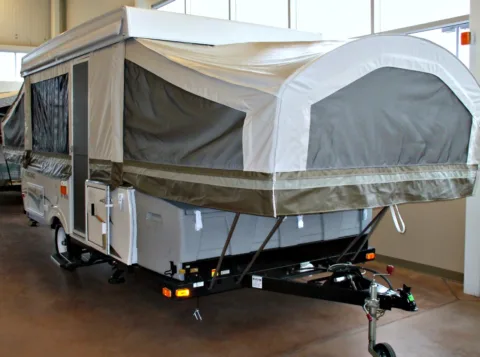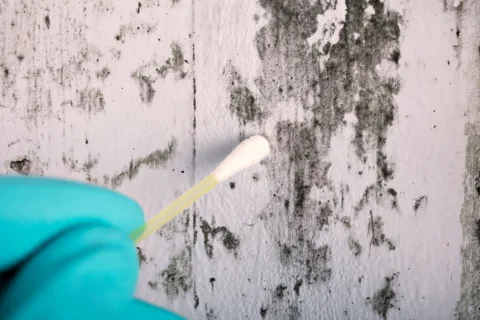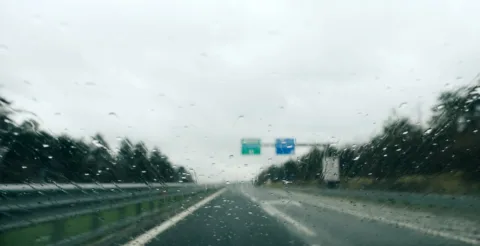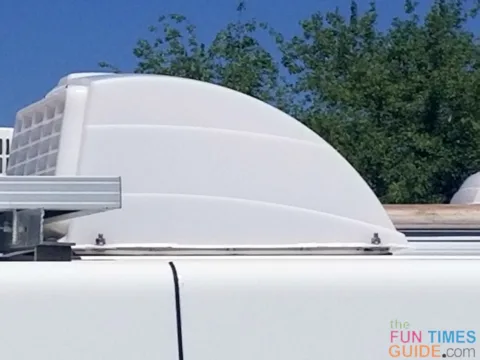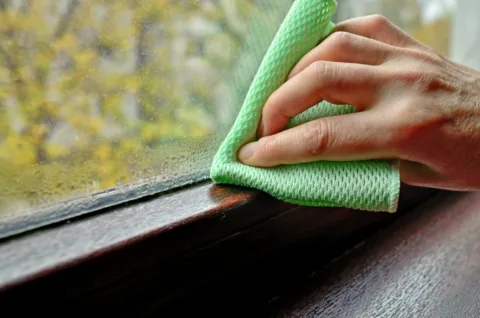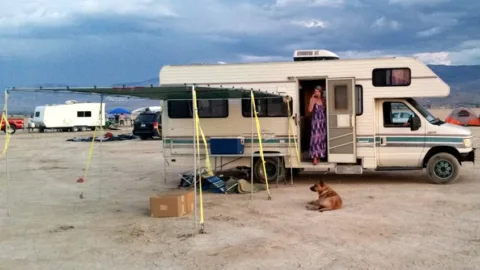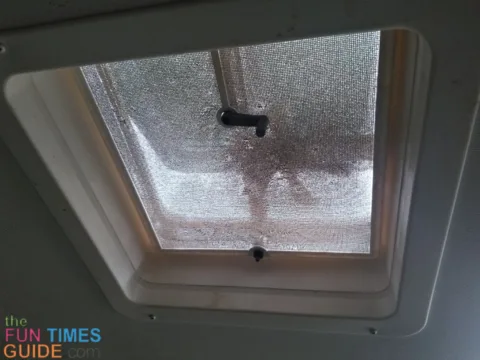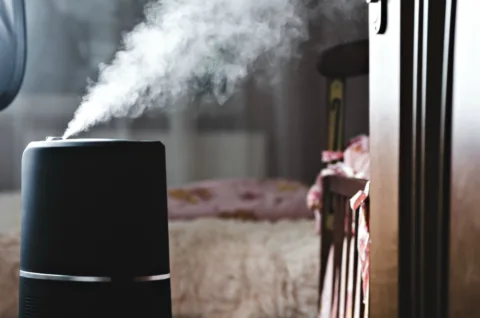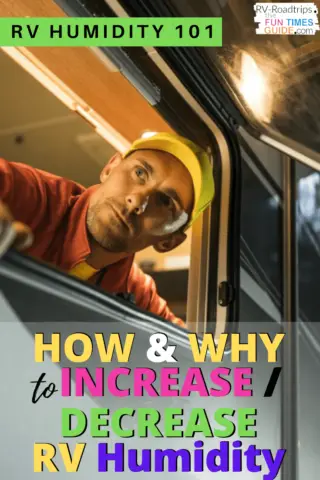Too much humidity and too little humidity are both bad for your RV.
If you’ve ever had a damp basement, then you’re familiar with the musty odor that goes with it.
Letting too much humidity accumulate inside your RV can lead to a number of problems — worse than just a musty odor. Mold is sure to follow, and removing mold in an RV can be a real problem!
Similarly, one of the biggest downsides to camping tents, tent trailers, and hybrid hard-wall RVs with fold-out tent sections is that the canvas parts will quickly develop mildew or mold if they are folded up when they are damp. (Like when you encounter rain on your outing, and then you fold-up camp while everything is still wet!)
The #1 Way To Avoid Mold & Mildew On Camping Gear
If it has rained on your camping trip, once you get home you must set up your RV (or tent, trailer, camper), open all windows, and let it air-dry thoroughly!
If you put it away wet just ONE time, you may never get rid of the mildew smell again… or be able to undo the damage caused by mold.
Wet camping gear must never be left closed up. It needs ventilation — to allow the moisture to escape. Otherwise, mold is most certainly in your future.
5 Steps To Reduce Moisture & Humidity In An RV
Here are the steps to follow — to make sure that excess humidity doesn’t become a problem inside your RV:
#1 – After every outing, let your RV air out with windows open, roof vents open, and even mattresses and pillows propped up in a way that will allow air to get all around them. (You would be surprised how much moisture gets trapped in bedding!)
#2 – Install vent covers like Maxxair vent covers — so the roof vents can be left open allowing heat and moisture to escape. (This is necessary in both humid and dry climates.)
#3 – To prevent mildew on the exterior of your RV, it’s a good practice to wash it regularly. Places like Florida or the Gulf Coast will have your RV turning green, if you don’t wash it regularly.
#4 – Products like Damp Rid can help wick away moisture during periods of storage.
#5 – If humidity is a reoccurring problem, consider placing a portable dehumidifier in your RV while it’s in storage. A portable dehumidifier will remove moisture as necessary, keeping the humidity level inside your RV within an acceptable range.
Did You Know?… Plants will naturally absorb moisture and humidity from the air!
How To Prevent RV Window Condensation
Condensation is another moisture problem that will occur when it’s colder outside than it is inside.
In RVs, this usually takes the form of water droplets on windows. If enough water accumulates, it will run down to the window frame channel.
Along RV windows, there are “weep holes” which allow water from condensation to exit to the outside without causing any problems.
If water is accumulating in the window track of your RV, make sure that the weep holes are clear.
Tent campers will absorb all of the moisture from condensation — which requires complete airing out to ensure that the moisture has been removed before packing and storing your tent.
4 Steps To Increase Moisture & Humidity In An RV
Too little moisture is an equally destructive problem. For example, in desert conditions, RVs left in storage can incur structural problems as a result of the dry, arid climate. While in high-moisture climates, wood structures expand — in dry climates, they shrink.
If you have a wood frame RV, the structure can shrink enough to actually buckle aluminum siding! From personal experience with a teardrop trailer that was constructed of high-quality birch plywood, the aluminum sheeting on the roof bubbled enough to pull away from the structure.
Here are the steps to follow — to make sure that lack of humidity doesn’t become a problem inside your RV:
#1 – Leave covered roof vents open to allow heat to escape during the hot months of summer when temps can easily rise above 120 degrees for weeks on end.
#2 – Leave a source of moisture inside the RV while it’s in storage. Multiple plastic milk jugs filled with water and left throughout the RV (with the caps off) will provide a source of moisture to evaporate during the hot months of storage. Don’t be bashful… the more jugs the better!
#3 – In extreme cases (such as with the teardrop trailer I mentioned above), place a shallow pan of water with a box fan blowing across it inside the RV. Refill the pan as needed to rehydrate the wood in the trailer. In my case, this actually worked to expand the wood. It also removed the wrinkle in the aluminum roof sheeting.
#4 – You can also use a portable humidifier — if you have a source of electricity where your RV is stored. A portable humidifier will add moisture as necessary, keeping the humidity level inside your RV within an acceptable range.
Did You Know?… Doing laundry inside your RV will naturally increase humidity, as well!
The Bottom Line
When it comes to humidity and your RV, too much or too little can be a real problem and cause a lot of damage!
In a house, the recommended humidity level is around 50% — which is ideal for an RV as well. Your goal is to maintain a stable level of shrinkage or expansion in any of the wood items inside your RV — so as close to 50% you can keep it, the better.
So, if you’re going to be parking or storing your RV for long periods of time in hot and humid weather or in excessively wet weather conditions, be sure to follow the above tips to prevent longterm damage to your RV.
Like in your house… maintaining good air is important to your health and well-being inside your RV as well.
Like this post? Save it to read again later… or share with others on Pinterest!


